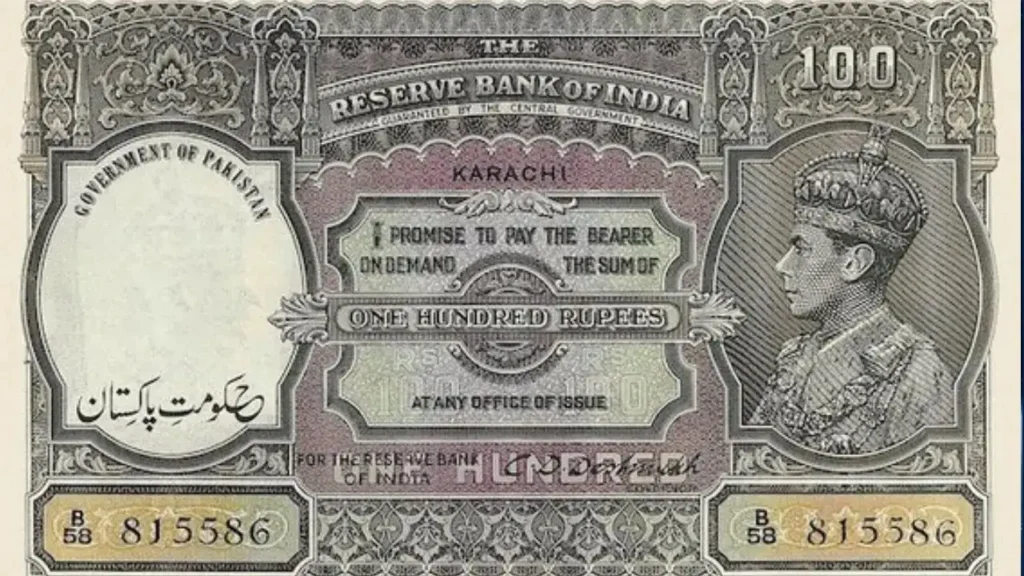
Do you know that immediately after partition in 1947, Pakistan did not have its own currency and its first money was not printed in Lahore or Karachi, but in Reserve Bank of India (RBI) presses in India?
The Reserve Bank of India (RBI) printed and supplied Pakistan’s earliest currency. It was essentially Indian Rs 1, Rs 2, Rs 5, Rs 10, and Rs 100 rupee notes engraved (not overprinted) with the words “Government of Pakistan” in English and “Hukumat-e-Pakistan” in Urdu on the white area of the note.
These notes printed by the India Security Press in Nasik, continued to be legal tender across Pakistan.
This is because in the aftermath of partition Pakistan did not have printing presses, financial infrastructure, trained staff, or a central bank hence the Indian government and the Reserve Bank stepped in to act as Pakistan’s banker for a full year, until June 30, 1948, despite political tensions between the two nations.
However, a peculiar situation cropped up in January 1948, when Pakistan attacked India in what is known as the first war after partition in Kashmir. India decided to hold back the last instalment of Rs 55 crore owed to Pakistan under the partition agreement.
The logic behind the move was — why fund an enemy at war? But Mahatma Gandhi began a fast unto death to protest against what he claimed to be India’s betrayal of its commitment. Gandhi’s formula worked and the funds were released. However the largely unpopular decision reportedly led to Gandhi’s assassination later that month.
But in the process Pakistan, realized the need to become financially independent and swiftly established its own central bank.
Accordingly, the arrangement to supply Indian currency notes to Pakistan was terminated on 30 June 1948 and the State Bank of Pakistan assumed control on July 1, 1948.
In October 1948 Pakistan issued PKR 5, PKR 10, and PKR 100 notes as its first independent currency.
Since that day Pakistan did not need currency from India and has developed its own money.
Until 1971, Pakistan banknotes were bilingual, featuring Bengali translation of the Urdu text (where the currency was renamed taka), since Bengali was the state language of East Pakistan (now Bangladesh)
In 1972, Bangladesh introduced the taka originally at parity with the Pakistani rupee. Soon thereafter the Pakistani rupee ceased to be legal tender in Bangladesh.

